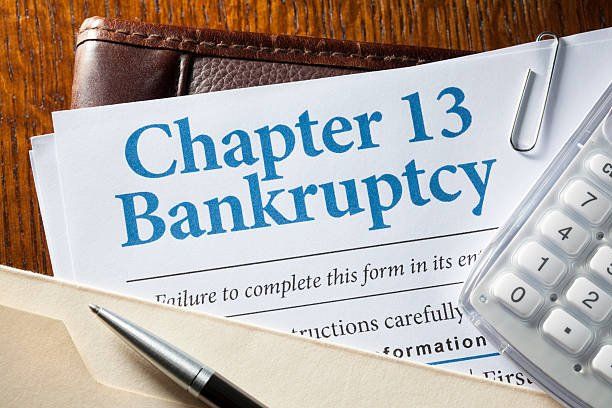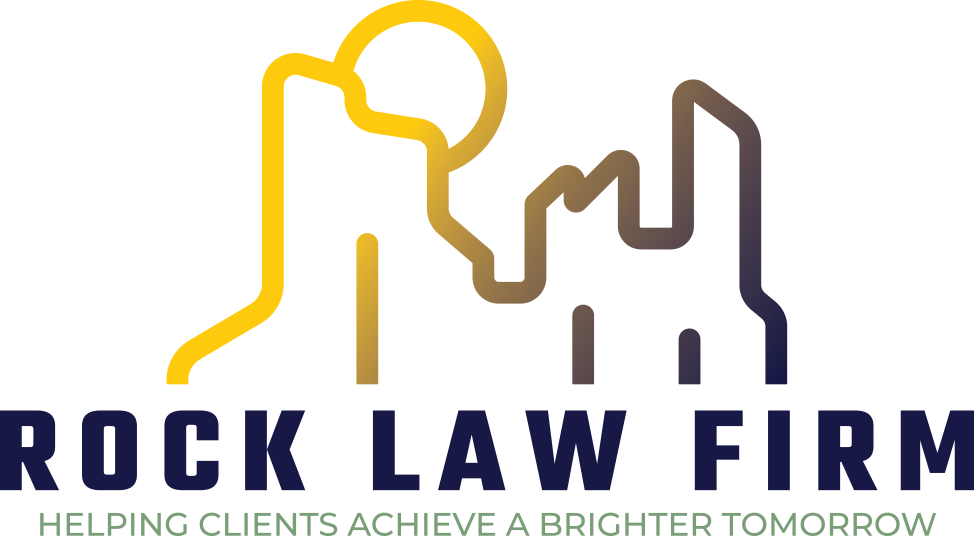
The Process of Filing for Chapter 13 Bankruptcy
Rock Law Firm
Chapter 13 bankruptcy is a debt repayment plan that allows you to pay off your debts over a three-or five-year period without incurring interest. It's one of the best debt relief options for people who have fallen behind on their debt payments but have a steady income to fund the plan. Filing for bankruptcy provides a soft landing for debtors and, more importantly, those who are at risk of losing secured debt assets such as cars or homes to foreclosure.
How Does Chapter 13 Bankruptcy Work?
The chapter 13 bankruptcy process begins when you file a petition with bankruptcy court through a competent attorney. If your petition is granted, the bankruptcy court will usually appoint an impartial bankruptcy trustee to oversee the process and ensure you follow all of the rules.
Depending on your income, the bankruptcy judge will set a repayment period of 3 to 5 years. In Arizona, if your current monthly income is less than the required state median, you will be assigned a 3-year plan unless the court orders a 5-year plan. If your monthly income is higher than the state median, you will receive a 5-year plan.
If you complete the payment plan and meet all of the attached conditions in the bankruptcy code, you may be eligible for a debt discharge. This means that any outstanding debts will be forgiven.
Requirements for Filing a Chapter 13 Bankruptcy
To be eligible for a chapter 13 bankruptcy, you must meet the following requirements:
Must be an individual as organizations or corporations are not eligible
You must have a regular income, which includes a disposable income, and provide proof of it
You haven't filed for a chapter 13 bankruptcy in the past two years or a chapter 7 in the last four years
You haven't filed for a chapter 13 or 7 bankruptcy that was denied in the last 180 days for any reason, like missing court appearances.
Your unsecured debts should not exceed $336, 900 and secured debts must be less than $1, 010, 650 (these figures may vary due to the consumer price index)
Filing for Chapter 13 Bankruptcy
As previously stated, chapter 13 bankruptcy allows you to clear some or all of your debts without interest over a comfortable three or five-year period. However, the application process can be complicated. However, filing for chapter 13 bankruptcy will be easier if you follow the steps below.
1. Get a Competent Bankruptcy Attorney
Remember that the process can be complicated, and it's easy to overlook a few crucial steps or make costly errors while filling out the forms. As a result, an attorney ensures that none of this occurs.
2. Enroll for Credit Counseling
You and your attorney will meet with a credit counselor, preferably from a non-profit credit counseling agency, for free counseling and consultation. The credit counselor will examine your case in greater depth and advise you on whether the chapter 13 process is the best option. A credit counselor can also assist in the creation of a repayment plan.
3. Fill Out the Forms
You'll fill out several forms with your attorney, providing information on your entire financial profile. The paperwork will be tedious, from assets to liabilities, monthly income to a list of creditors.
4. File for Bankruptcy and Submit a Payment Plan
You can file for bankruptcy through your attorney by submitting the completed forms. When you file for bankruptcy, you must pay a filing fee, which initiates your case immediately. As a result, you'll be granted a "automatic stay," which prevents all of your creditors from pursuing further collections, and a trustee will be appointed to oversee the process.
Whether your bankruptcy petition is approved or not, you must submit a payment plan within 14 days of filing for bankruptcy and begin payments within 30 days.
5. Meet with Creditors
Your trustee will convene a meeting with your creditors no less than 5 days before your hearing to discuss and resolve any outstanding issues they may have with you.
6. Attend Court Hearing
Following your meeting with your creditors, you and your trustee will appear in court to confirm your repayment plan. Creditors who choose to attend are welcome.
7. Begin Payment of Chapter 13 Bankruptcy
With the court's approval, you can begin making payments over a three-or five-year period.
8. Complete the Chapter 13 Plan
Following completion, the court may order a debt discharge to relieve you of any remaining debts. You must, however, have completed your monthly payments in accordance with the plan, completed a debtor education course, and been consistent with child support or alimony.
Any unsecured debt, such as a student loan, car loan, or missed mortgage payments, will not be discharged. As a result, bankruptcy laws will not protect you from unsecured creditors.
How Much Does a Chapter 13 Bankruptcy Cost in Arizona?
In Arizona, a chapter 13 bankruptcy may cost up to $5,000, which includes attorney fees, bankruptcy course fees, bankruptcy filing fees, trustee fees, and other costs. However, depending on the nature of your case, the attorney fee may vary.
What Are the Benefits of Chapter 13 Bankruptcy ?
The benefits of chapter 13 bankruptcy include:
Offers protection from creditor harassment
Clearing off your debts while retaining your house or vehicle
Clearing off unsecured debts easily
Affordable payment plan
Preventing wage garnishments and debt suits
What Are the Downsides of a Chapter 13 Bankruptcy?
While this debt repayment plan promises a handful of benefits, it comes with a few downsides that include:
It will affect your credit report for seven years
It doesn't cover all kinds of debts, like child support and alimony
Makes it difficult to get a mortgage within seven years
Might stretch you to your financial limits
Why Choose Us?
At Rock Law Firm, we are dedicated to providing with the best and most affordable debt relief services possible. We assist our clients in smoothly navigating the chapter 13 or 7 application process and provide the best soft landing for them. With our experienced team of bankruptcy attorneys, we handle all types of debt cases and assist clients in resuming their lives with a clean financial slate. Contact us right away to help you with the process of filing for chapter 13 Bankruptcy.
